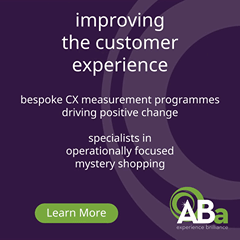Social loyalty: the new faces of customer relationships
Relationship marketing has long tried to use technology and programmes to replicate the early days of business, where the owner knew all their customers personally and success was based on how their reputation spread. By Marc Darling of Loyalty LabTM Group.
Social marketing brings back many of the elements that supported this model of customer engagement. It creates a platform for spreading word of mouth and opinions between and among customers with a speed and breadth that we are only now beginning to understand.
The social marketing platform itself is just that, a platform. Companies must invest to participate in the conversation, initiating posts, tweets, comments, and threads to start the dialog and participating in relevant ones started by others. In this age of accountability, however, this investment is unlikely to meet the standards of modern measurement and ROI given the difficulty in measuring results.
Introducing relationship-marketing elements into the dialogue has the potential to dramatically change the structure of the conversation. To do this, marketers must secure the most crucial element in making social marketing work for them
Customer opt-in
Marketers must present a value proposition that will motivate customers, whether rationally or emotionally, to connect some or all of their social activities to their traditional customer profile.
Securing opt-in changes the game dramatically. Now marketers can track, identify, quantify, and use social data to improve interactions, drive promotions, understand true customer value, and build a trusted relationship with their customers.
Ultimately opt-in opens up a quantitative understanding of one of the most important but least understood elements in relationship marketing – customer influence.
Unfortunately, securing opt-in is not easy. Years of data breaches, spam, junk mail, and telemarketing have made even raving fans reticent to share their personal information. Enter social loyalty.
Social loyalty introduces the loyalty-marketing notion of the “give to get”, that is, customers are promised greater benefits in exchange for their information.
Traditionally this has translated into points-based loyalty programs (which do have a role), but the overarching concept is this notion of a deeper, richer, more relevant interaction in exchange for a higher level of benefits than is available to the typical customer.
TASKS FOR MARKETERS
In these days of social marketing, marketers should start by becoming familiar with all of the technologies and services, to understand how customers will use them to improve their lives. From a corporate standpoint, getting started involves four basic activities:
Aggregate the activity
Collecting customer data is the first task. This won’t come easy, but the potential payoff is tremendous. This can be broken into four parts:
• Start by collecting customer identifiers – think of providing your customers with a “social wallet”, where all of their information is gathered and fed into a single repository. In some cases, just securing a customer’s email address is enough to start collecting data
• Next collect opt-ins from as many of the relevant data sources as possible
• Now track the activity and start learning which applications and data sources make the most sense for your business
• Lastly, use the data to score your customers somehow, such as the examples in the Influencer Value discussion below.
With this information, you will have actionable data against which you can apply business rules and activities.
Reward the activity
Armed with actual customer activity, you have the option to structure a revised
“Give to Get”. That is, to develop a reward structure that provides benefits for certain activities. This way you can clearly signal which activities are beneficial to you as a company, and which you would like your customers to perform. The most likely examples are writing reviews, contributing to forums, tweeting positively, retweeting, liking on Facebook, or posting to blogs could be possible.
While this is an important element in your social loyalty strategy, it is neither required nor your only option. You can design and implement a social loyalty strategy that does not rely on rewarding particular behaviour. An elite support team focused on the needs of the top 1% influencers, or bringing those top 1% into the fold as “advisors” or as part of a panel will go a long way towards improving relations as well. In this case you are rewarding their “connectedness activity” with greater support versus financial benefits, which may be more important to this group.
Segment better
Adding social marketing activity and scoring to your customer database enables vastly better segmentation than spending alone. The updated customer values and activity allow a clearer view of the true value of your customers and lets you identify many more segments than before.
Some investment in analytics will likely be necessary. While some segments will be obvious, others will not be. In many cases, just knowing which networks a customer belongs to will identify substantially different segments.
Some discovery will be necessary and a focus on learning how to use and benefit from these segments is needed. However, most relationship marketers know how to segment, test, and iterate effectively, so few new skills are needed here.
Build better relationships
Your interactions should be more relevant, utilising what you have learned through the social marketing data.
The key here is to use the better segmentation in a meaningful way. Increasing email frequency among influencers is not the point. Routing their calls to elite support, a more flexible return policy, a personal note from the head of marketing, or soliciting direct feedback are all ways to improve the trust factor with these important customers.
If there is one place where most marketers are on new ground, it is here. Efforts to gain trust and engage in open dialogue are very specific to any given company, and will be influenced by the company culture and resources. Relationship marketing up to this point has been thinly veiled database marketing, using segmentation to better target offers. Offers are good, but creativity is needed to build a strong relationship with these crucial customers upon whom so much of your company’s future success is based.
In part two of this article, we will consider the benefits of social loyalty.














